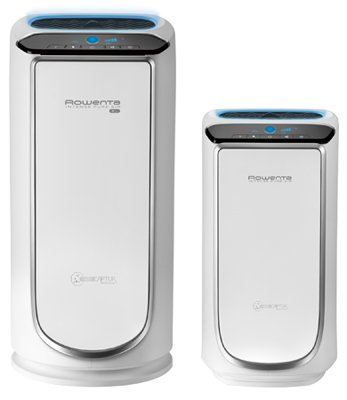
The number of people in Orange County who are affected by airborne allergies is much higher than you might think. In general, around 30% of adults and 40% of children live with respiratory allergies. In terms of other widespread respiratory issues, asthma is the most common chronic disease in children, and is the number reason why children miss school.
Because of the wonderful climate, Orange County is covered in pollen year-round. Since there is no severe winter frost to kill off pollen, we are at a disadvantage compared to northeastern America. It’s usually worse in spring and fall, but it’s always there. That green dust on your car is pollen. The main sources of airborne pollen are:
- Trees in the late winter and spring;
- Grass in the late spring and early summer; and
- Weeds in the late summer and fall.
Pollen is an outdoor allergen, but indoor allergens cause respiratory problems as well. Common indoor triggers that can cause an allergic attack include animal dander, tiny dust mites that live everywhere in your home, and mold spores. When an allergen is present indoors, it makes up a greater percentage of the air you breathe. It’s the same as having a barbecue indoors: if the smoke can’t escape from the room, you breathe much more of it than if you were grilling on the patio. The same is true for indoor allergens like dust mites and mold.
Whether the allergens are inside or outside, it is important to treat them on a consistent basis. The reason is that many allergies are perennial with seasonal exacerbations. That is, they are present all the time but get worse at certain times of the year. And people with airborne allergies have a more severe reaction if they have low-level contact with the allergens most of the time but high-level contact with them during peak season. Work with your family doctor or allergist to develop a strategy for relief that stays constant over time.
The first step in dealing with airborne allergies is to be properly diagnosed. If you or your kids are showing symptoms like coughing fits or recurring chest colds, see an allergist. Don’t just write the symptoms off. Once your allergies are diagnosed, you and your doctor can determine the proper treatment.
It is impossible to completely avoid airborne allergens, but there are a variety of physical measures that you can take to reduce your family’s exposure. Focus on the bedrooms, because your family spends the night there and is thus exposed for long stretches of time to allergens that may be present.
For outdoor allergens
- Close the windows. You especially want to keep the bedroom windows of allergic family members closed so that pollen from outside doesn’t get on the pillows.
- Check the filters on the vents and air conditioning system of your home and change them regularly.
- When you come in from the outdoors, you will have pollen on your body, so you should change your clothes. You should shower and, especially, wash your hair before bed to keep pollen that is stuck to your hair from being transferred to the pillow.
For indoor allergens
- Keep the bedroom tidy. Dust is a byproduct of clutter. Deteriorating fabric in curtains and other material also produces dust.
- Don’t store too many things in the bedroom. The fewer objects, the less potential for dust.
- Use pillow, mattress, and box spring encasings and wash them on a regular basis.
For animal allergens
- The allergic agents in your pets aren’t just in their hair. Pet allergens are in their sweat, saliva, and urine. Those allergens can transfer when they lick you or rub against you. Keep all of the areas clean that pets come into contact with.
- A cat or dog with short hair is not safer for those with respiratory conditions than a pet with long hair. That is a myth.
- You don’t necessarily have to deprive your kids of having a cat or dog just because they have allergies. In some cases, early exposure to animals may help children cope with pet allergies.
Most allergies are chronic. For effective relief, an allergy needs be treated regularly, the same as if you had a heart condition. Don’t let airborne allergies restrict your family; if you or your children have symptoms, see an allergist. With treatment, life with an allergy can be full and normal.

William E. Berger, MD is a board-certified allergist and immunologist at Mission Hospital. He is the author of Asthma For Dummies.
Allergen Fighters

Dyson Small Ball
With an Animal/Allergy-compatible tool kit, this latest upright weighs just 12.15lbs (light enough for your tween to help out!) and features the most powerful suction on the market to take care of all the airborne woes that give your family the sniffles and sneezes.
$399, www.Dyson.com

AirFree Purifier
This stylish and silent purifier reduces the amount of microorganisms and harmful substances like bacteria, viruses, mildew, mold, dust mite allergens, pet allergens, pollen, and tobacco odors from the air using a hi-tech heat process, without any need to change filters.
$299, www.airfree.com

Rowenta Intense Pure Air
This air purifier filters 99.97% of pollutants, including VOCs, mold spores, dust mites, pollen, animal hair and domestic formaldehyde. Set timer for 1-8 hours in auto, night or manual mode, for four levels of filtration.
$299, www.Rowenta.com









LNWeaver says
I never considered indoor allergens. Maybe that’s a big issue during the winter. It may be valuable to see a doctor about allergy treatments if you have acute symptoms.